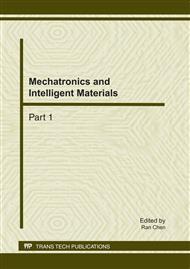p.1176
p.1182
p.1189
p.1194
p.1199
p.1204
p.1210
p.1216
p.1221
Achieving and Machinability Analysis of the Cutting Method for a Internal Surface
Abstract:
In order to solve the problems of aluminum package cleaning a kind of method of milling process for internal surface is proposed. Using three standard cutters which move as planets complete the milling processing for inner cylinder and bottom surface. This method makes the cutters forced reasonably and cutting efficiency is promoted. The adjusting device which is arranged on bigger mills makes the processing size to be changed so the applicability of this cutting method is improved greatly. After research the calculating method of cutting amounts and cutting force are established. The cutting capability of the new method is also analyzed in the paper. By the way the relation curve of cutting amounts and cutting force with cutter rotation rate are given. The achievements above will provide a theoretical basis for the application of this method.显示对应的拉丁字符的拼音
Info:
Periodical:
Pages:
1199-1203
Citation:
Online since:
February 2011
Authors:
Keywords:
Price:
Сopyright:
© 2011 Trans Tech Publications Ltd. All Rights Reserved
Share:
Citation:


